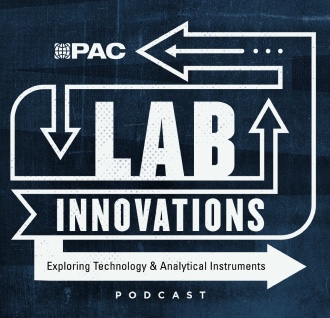Nov-2021
Moving to a more sustainable future with Coriolis technology
Coriolis flow monitoring can optimise process control for refineries as they diversify feedstocks, increase hydrogen yields and reduce carbon emissions.
Meha Jha and Julie Valentine
Emerson
Viewed : 2442
Article Summary
There are a variety of approaches the oil and gas industry is taking for decarbonisation. Some strategies include reducing emissions and improving efficiency at existing production facilities, investing in renewable fuel production, reducing emismsions by implementing carbon capture technology, and/or producing alternative fuels like hydrogen. While new process licensed technologies and units are being evaluated and implemented to support these sustainability initiatives, the automation and/or leveraging of best practice measurement instrumentation to better optimise and control these new operations should also be considered.
A powerful technology with the versatility to measure, optimise, and control a variety of these sustainability production initiatives is Coriolis technology. Coriolis flow meters are multivariable flow measurement devices that provide a direct measurement of mass flow, density and temperature for liquids, slurries, and gases. Traditionally in the hydrocarbon industries, Coriolis meters were more commonly used for applications such as liquid and gas custody transfer metering, facility or unit mass balance, and product blending. However, the multivariable capabilities of the technology, in addition to meter performance and accuracy not being impacted by changing fluid properties, process conditions, or flow profiles is resulting in increased adoption of Coriolis technology to support sustainability programmes focused on reducing emissions, improving energy efficiency, and controlling the production of alternative fuels.
Combustion optimisation
For existing refineries and chemical plants, one of the biggest opportunities to improve energy efficiency and reduce emissions is by improving combustion control of fired heaters and boilers. Combustion control impacts the safety, efficiency, and emissions of fired equipment. Because of process control variability, fuel gas composition variability, and safety risks, the equipment operates with a high level of excess air. While the excess air ensures complete combustion and maintains a safer operating margin, the trade-off is excess NOx emissions and higher fuel and energy costs.
Typically, the fuel gas flow is controlled using a pressure or volumetric-based control scheme. However, the energy content and stoichiometric air required for combustion of fuel gas are more proportional on a mass basis than a volume basis. Therefore, controlling fuel gas flow on a mass basis with Coriolis meters provides more stabilised control as fuel gas composition varies. The more stabilised control allows operators to lower the target oxygen levels in the stack and operate with less excess air, reduced emissions, and increased efficiency.
One North American refinery controlled fuel gas on a volumetric flow basis with a differential pressure orifice meter. The variations in fuel gas composition caused control variability. The fuel gas composition range was methane from 0-56%, hydrogen from 17-72%, non-combustibles from 0-2%, and nitrogen from 0-4.8%. To prevent heater trips during rich fuel conditions, the refinery operated with a target level of O2 in the stack of 5% By shifting to controlling the fuel gas flow on a mass basis with a Coriolis meter, the refinery was able to lower the target oxygen in the stack from 5% to 3.5%, resulting in $400,000.00 net present value.
Green diesel production
Driven by recent government subsidies and fuel credits encouraging the use of bio-based feedstock for fuel production, many refineries in the United States and a few in Europe are adding or converting to green diesel production. This new wave of biodiesel production involves the hydroprocessing esters and fatty acids (HEFA) and the isomerisation of triglycerides. While there are many similarities to traditional refining with the reaction mechanisms and process equipment involved, refineries are finding the traditional volumetric flow control and measurement practices have limitations in these newer operations.
Because of the application flexibility, repeatability, and cost advantages, the majority of the flow measurement points in a traditional refinery are controlled on a volumetric flow basis using differential pressure orifice flow meters. However, for green diesel production, there are a few reasons why traditional differential pressure orifice flow meters can be limiting in such applications.
Differential pressure orifice flow meters are impacted by changing process conditions and fluid properties. The meter correction factor must be calculated to determine the difference between actual process conditions and meter design conditions. The accuracy of these meters can range from 0.5-1% when compensated for temperature and pressure changes or 1-5% when uncompensated. (This is assuming that the specific gravity of the fluid stays constant.) During green diesel production, a variety of feedstocks, including tallow oil, soybean oil, rapeseed oil, etc, are blended and processed in the reactor section. Feed specific gravity into the reactor section can vary by up to 10% and viscosity tenfold depending on the process design. These variations result in inaccuracies impacting the unit mass balance, meeting production targets, and reactor control. The reactor control is especially important because the hydrodeoxygenation reaction is highly exothermic, and the exotherm varies based on feedstock, so accurate control of the target recycle to fresh feed ratio and the purge rates are critical to prevent temperature excursions and damage to the catalyst bed. Therefore, Coriolis meters are recommended for the reactor feed to recycle ratio and purge rate controls.
Coriolis meters are also recommended for control of pre-feed treatment operations to remove contaminants that could harm catalysts in the reactor section. The pre-feed treatment operations mirror food and beverage manufacturing more so than traditional refining. This can include drying, polyethylene removal, filtration, enzymatic degumming, chemical dosing, and bleaching. Many of the reactions require stoichiometric ratios, mass-based reactions, and concentration measurements for acids and caustic, favouring the use of Coriolis flow meters.
The other reason why more accurate measurement and the use of Coriolis technology is also important is for carbon intensity calculations and fuel credit or government subsidy reporting. To obtain such credits, accurate reporting and measurement of all raw materials, utilities, and yields are required.
Carbon capture
As refiners are looking for significant ways to reduce emissions in their refineries, many are considering ways to capture the CO2 that would otherwise be emitted into the atmosphere as a result of combustion operations. Figure 4 shows the most significant sources of carbon emission in a typical refinery.
There are several technologies used to capture carbon, and technologies are advancing quickly to become more efficient and economical. Incentives are also in place in many countries to reduce CO2 emissions, making it more economically attractive to capture the carbon from the largest sources of CO2 emissions in the plant.
The most mature technology to capture CO2 is through chemical absorption with amine treating. The traditional challenge of this technology is the trade-off between capture efficiency and energy consumption from the stripper reboiler. Continuously monitoring solvent quality through the utilisation of Coriolis technology to measure the density of the fluid is one contributor to optimising the absorption process.
Add your rating:
Current Rating: 4

















